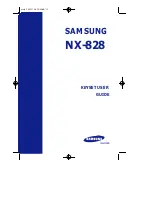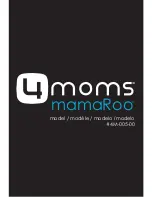
|
29
CRYSTAL® BATTERY USER MANUAL
4.1 BATTERY
TRANSPORT
Crystal® batteries are considered NON-HAZARDOUS
normal goods for airfreight and shipping. Crystal®
batteries are not restricted to IATA Dangerous Goods
Regulation (special provision A67) and not restricted
to IMO International Maritime Dangerous Goods code
(special provision 238). Note: Still requires an IATA
certificate before shipping via air or sea freight.
4.2 BATTERY
STORAGE
On arrival
All Crystal® batteries have been charged prior to
shipping to activate the crystallization of the
electrolyte in the batteries. Precautions have been
taken to pack the battery units, individual cells or
cabinets containing batteries for shipment to ensure
their safe arrival.
However, upon receipt, you should inspect for
evidence of damage that may have occurred during
transit. If damage is noted, make a descriptive
notation, and file a damage report. If you have any
questions concerning potential damages, contact
your nearest Green Rhino office or an authorized
distributor.
Green Rhino recommends you perform 3 discharge
and charge cycles prior to the batteries being put
into mission-critical or solar installations.
WARNING: During Inspections take Precautions
Against Shock
STORAGE: Crystal® batteries should be stored in
a clean, well ventilated and dry environment
WARNING: Avoid direct exposure of Crystal®
Batteries to the sun.
WARNING: The optimum storage temperature
of Crystal® batteries is 15°C to 25°C. The
minimum storage temperature is -20°C (-4˚F),
the maximum storage temperature is +40°C
(104˚F). Storage at higher temperatures will
result in accelerated rates of self-discharge and
possible deterioration of battery performance
and lifetime.
WARNING: The maximum relative humidity for
storage of Crystal® batteries is 95%.
WARNING: The highest elevation for storage of
Crystal® batteries is 6000m above sea level
Self-Discharge
The self-discharge characteristics of a battery
changes with environmental temperatures, the
higher the temperature the higher the self-discharge,
so the batteries should not be stored in an
environment that is subjected to extremely
high-temperature conditions for long durations of
time.
Due to the use of our unique Crystal® composite
electrolyte and alloy grid plate technology, the
self-discharge rate of Crystal® batteries is
significantly reduced. At a constant 25°C (77˚F)
environmental temperature Crystal® batteries can
be kept on a shelf for up to two years without
constant top up charging. The batteries will maintain
over 80% of their rated capacity after 12 months.
Table 4 Self-discharge characteristics of Crystal®
batteries.
4. TRANSPORT,
STORAGE
AND INSTALLATION
STORAGE
CAPACITY
25˚C (77˚F)
3 months storage
95%
85%
80%
6 months storage
1 year storage










































